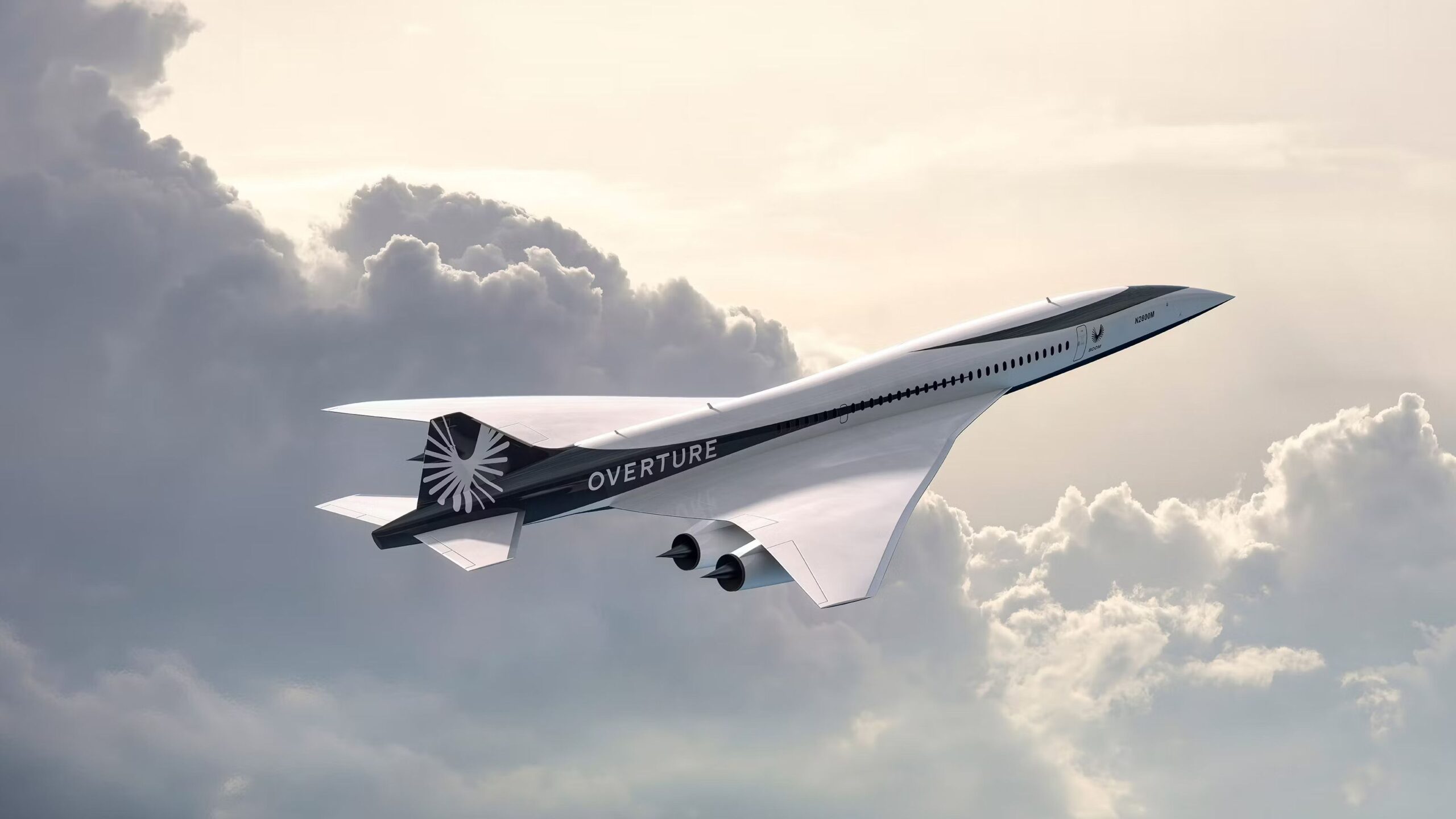Boom Technology, a startup aerospace manufacturer founded in Colorado nine years ago in 2014, hopes to change the aviation world by introducing its supersonic Overture aircraft. While many had long believed supersonic flights to be a relic of the past, this could all be about to change if the Overture is able to profitably enter service with airlines across the globe.
In recent years, the manufacturer has found partners that could prove critical, with American Airlines and United Airlines both placing orders for the plane. Furthermore, Japan Airlines, a major investor in the jet, will also likely prove a reliable supporter. But what other carriers could the Overture prove a perfect fit for?
Concorde vs. Boom Overture: Which One Is Better?
This question is less straightforward than just choosing the world’s largest airlines, as heavy restrictions impact supersonic flight. First, flights must be primarily (if not entirely) over-water, which will eliminate airlines with a majority of over-land flights. Secondly, the aircraft’s range is only 4,250 nautical miles, eliminating many long-haul transoceanic routes.
Lastly, the aircraft will not be cheap to operate, and, as a result, fares will certainly not be on the affordable side. This will presumably eliminate any budget airlines from consideration here. With all of the above factors in mind, let’s take a look at five carriers where the plane could find a fitting home.
5 British Airways
Target market: London to the US East Coast
Potential routes:
- London-Heathrow Airport (LHR) to John F. Kennedy International Airport (JFK)
- London-Heathrow Airport (LHR) to Boston Logan International Airport (BOS)
- London-Heathrow Airport (LHR) to Washington Dulles International Airport (IAD)
It’s difficult to begin discussing the potential return of supersonic aviation without first taking a look at the carriers that started it all with Concorde. First, British Airways is a very strong candidate for the new Overture for multiple reasons.
Photo: Graham Bloomfield | Shutterstock
Primarily, British Airways has a strong network of overwater flights between London and the US East Coast’s key business hubs. These routes not only satisfy all of the aircraft’s requirements but also maintain the appropriate level of business travel demand required to operate profitably. During its operational period, British Airways turned an annual profit of between $37 million and $61 million throughout Concorde’s lifetime.
4 Air France
Target Market: Paris to the US East Coast
Potential routes:
- Paris Charles de Gaulle International Airport (CDG) to John F. Kennedy International Airport (JFK)
- Paris Charles de Gaulle International Airport (CDG) to Boston Logan International Airport (BOS)
- Paris Charles de Gaulle International Airport (CDG) to Washington Dulles International Airport (IAD)
BA’s other half, in regards to carriers that operated Concorde, Air France, is also a strong candidate to purchase the new aircraft. Overtures could easily fly most of the French flag carrier’s transatlantic routes between Paris and, similarly, key cities along the American East Coast.
Photo: Frederic Legrand | Shutterstock
During its original period of operation, Air France profitably operated the Concorde, turning an $8.8 million profit in 1984, which would only grow. Now, with the lower cost of operating Boom’s jet and with the support of business travelers crossing the Atlantic, Air France could also prove a strong potential customer for the Overture.
3 Hawaiian Airlines
Target market: Honolulu to East Asia and the US Pacific Coast
Potential routes:
- Daniel K Inouye International Airport (HNL) to Los Angeles International Airport (LAX)
- Daniel K Inouye International Airport (HNL) to Tokyo Narita International Airport (NRT)
- Daniel K Inouye International Airport (HNL) to Seoul-Incheon International Airport (ICN)
There are many immediate reasons that one might argue why Hawaii’s flag carrier would prove ideal for the Overture. First and foremost, with Hawaii being an island in the center of the Pacific, all routes to and from the islands would abide by the restrictions imposed on overture flights.
Photo: DLeng | Shutterstock
Second, the amount of premium demand for the Hawaiian Islands is difficult to understate. For one example, Japanese flag carrier ANA took on the challenge of flying the Airbus A380 to Honolulu specifically to capture this valuable market segment.
2 Air Canada
Target market: Montreal and Toronto to Europe
Potential routes:
- Montreal-Trudeau International Airport (YUL) to London-Heathrow Airport (LHR)
- Toronto-Pearson International Airport (YYZ) to London-Heathrow Airport (LHR)
- Montreal-Trudeau International Airport (YUL) to Paris-Charles de Gaulle International Airport (CDG)
With a strong presence in both London and Paris, Canadian flag carrier Air Canada could be poised to succeed in operating transatlantic flights using Boom’s supersonic aircraft. While the Canadian hubs of Montreal and Toronto are located somewhat inland, their locations are unlikely to greatly reduce operational efficiency.
Photo: Tom Boon | Simple Flying
Furthermore, business traffic between London, Toronto, and Montreal remains quite strong. While Paris is also a major hub for corporate travelers, the city is, of course, culturally tied to Canada’s Quebec region.
1 All Nippon Airways (ANA)
Target market: Throughout the Western Pacific
Potential routes:
- Tokyo-Narita International Airport (NRT) to Daniel K Inouye International Airport (HNL)
- Tokyo-Narita International Airport (NRT) to Singapore Changi International Airport (SIN)
- Tokyo-Narita International Airport (NRT) to Hong Kong International Airport (HKG)
As Japan Airlines, ANA’s main competitor, has already demonstrated a strong interest in the Boom Overture, it wouldn’t be surprising if this Japanese airline did as well. One might be surprised, however, at why the proposed routes above do not include any connections to the American West Coast.
Photo: Daisuke Shimizu | Shutterstock
As per the latest range statistics from Boom, routes between, say, Tokyo and Los Angeles, would immediately exceed the aircraft’s range. However, the carrier has any number of Asian overwater routes that it could certainly fill seats on due to high business travel demand. Furthermore, the airline could even further elevate the premium nature of its service to Hawaii with supersonic flights.






